
by Mark Smiley | Aug 30, 2017 | Travel
by Julie Hayden
 “I try to live normal, whatever normal is,” Christine Howard says matter of factly. That simple statement underscores the courage Howard packs into living every day with Stage 4 metastatic breast cancer. “I’m not a survivor, anymore. It’s gonna beat me. It’s an illness that’s going to kill me. I can’t say I’m okay with that but it’s a reality with me.” But Christine is not going down without a fight — for other breast cancer patients.
“I try to live normal, whatever normal is,” Christine Howard says matter of factly. That simple statement underscores the courage Howard packs into living every day with Stage 4 metastatic breast cancer. “I’m not a survivor, anymore. It’s gonna beat me. It’s an illness that’s going to kill me. I can’t say I’m okay with that but it’s a reality with me.” But Christine is not going down without a fight — for other breast cancer patients.
“I am very passionate about Sense of Security,” she exclaims. Howard devotes endless energy and time to the Denver-based charity. It gives direct support to breast cancer patients in treatment with $500 a month for six months to help pay for necessities like food, housing and transportation.
Over the past 15 years, Sense of Security has provided nearly $2 million to more than 1,300 Colorado breast cancer patients.
Howard is one of them, receiving the aid when she was first diagnosed with breast cancer a few years ago. “I felt a golf ball in my chest.” Howard started cancer treatment, working hard to keep her job. “I had decent health insurance but the bills were mounting up. No one budgets for cancer,” Howard explains. “I was under so much stress, I was just trying to keep my head above water.”
Then someone told her about Sense of Security.
“Sense of Security came in at the right time so I could get caught up,” Howard says. Executive Director Tim Taravella says Sense of Security was founded in 2000 by two women after they saw what a friend with cancer went through. “Our mission is to help the middle class,” Taravella explains. “Below certain income levels there are state and federal programs that can help. But there is no safety net for the middle class.”
there is no safety net for the middle class.”
Taravella says most Sense of Security grantees are in Stage 1 or 2 cancers and will successfully go through treatment to live full, vibrant lives. But he says the time they are undergoing treatment can be what he calls “financially toxic.” “Cancer is a ruinous disease financially,” Taravella says. “People are looking down the barrel of financial ruin because of cancer. Anyone who needs cancer treatment will face huge expenses and experience financial decline. Sense of Security’s mission is to stop that decline before they hit bottom. We do what we can to help them get through everything better, financially.”
Howard says Sense of Security provides something more. “It helps financially and that helps emotionally and by relieving the stress it also help patients recover faster.
It gives you that relief, “she adds, “It’s one thing that you don’t have to worry about and that trickles down and helps with overall relief and stress reduction.”
Taravella says Sense of Security is unique in that it is completely community supported. “We don’t get a dime from the gover
nment.” The organization’s major fundraiser is coming up September 16, 2017, at Four Mile Historic Park in Glendale from 5 p.m. to 9 p.m.
Taravella describes the “Distinctly Colorado” event as a “un gala.” “Wear your jeans and boots, learn to fly fish, hit some balls at the golf simulator or take two-step dance lessons.” They raised $75,000 last year and hope to hit $100,000 this year. He says, “This fundraiser is crucial to help Sense of Security continue to help Colorado breast cancer patients.
Howard will be there and urges people, “If you want to help, give to Sense of Security.” She adds, “Just be good to each other. If everybody tried to be a little kinder to people every day, it would make such a big difference in the long run.”
For more information or to get tickets to the Distinctly Colorado event go to senseofsecurity.org.
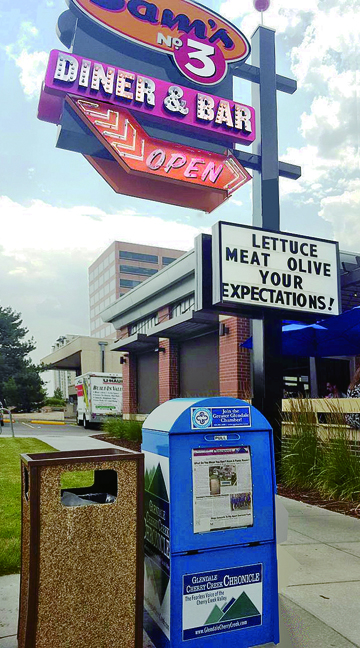
by Mark Smiley | Jul 24, 2017 | Travel
by Mark Smiley
You may have noticed some shiny new blue boxes in popular spots around town. The Glendale Cherry Creek Chronicle has invested in 10 outdoor newsstands that have been placed in high traffic areas around Glendale and Denver.
The newsstands can be found in front of such businesses as Sam’s No. 3, Bonnie Brae Ice Cream, Brown Palace, Snooze, Oblio’s Pizzeria, and Washington Park Grille. Two stands are situated in Cherry Creek North and for the first time, the Chronicle can be picked up in Stapleton as one of the new stands is located in front of Starbucks in 29th Avenue Town Center. As always, copies in these stands and elsewhere are free of charge.
The Greater Glendale Chamber of Commerce helped support the project to boost their membership and the increased distribution of the paper. The Chamber has increased their membership in 2017 and at the time of press, they have climbed to 280 members. On June 23, 2017, the Chamber was ranked number 23 among all chambers in the metro area based on membership.
The Chronicle now has a distribution of 86,200 with over 83,000 of those being mailed directly to homes and businesses from Lodo to the Dam. The remaining copies are distributed to 50 locations including the 10 new outdoor stands. For a complete list, click here.
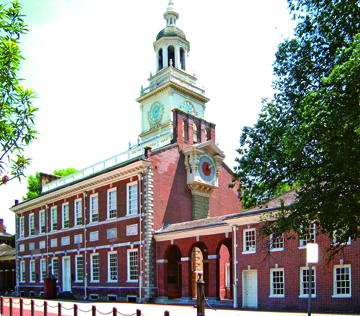
by Mark Smiley | Jun 23, 2017 | Travel
 by Ruthy Wexler
by Ruthy Wexler
The U.S. Constitution is mentioned a lot these days — as a talking point. TV pundits warn that it’s being destroyed; politicians blithely assure us that a recent action they took is “in the Constitution.” If only we could go someplace and learn from scratch: what is this document that began our country?
Turns out there is such a place: the National Constitution Center.
Of course, it’s in Philadelphia — but your journey there will be shorter and less arduous than the ones delegates undertook in 1787: jouncing in carriages or on horseback, they traveled rough roads for days. Once in Philly, they sat in a sweltering hot room and argued. Why couldn’t small states have as many representatives as big ones? What sort of leader should they have, if any?
Finally they emerged with a blueprint for a free nation.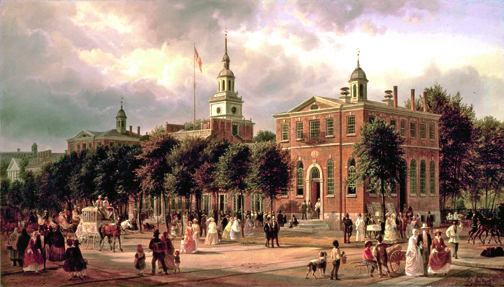
Agreed, their country wasn’t wholly free. Some delegates owned slaves, women had few rights. And no, our current society isn’t perfect. But before you withdraw into cynicism, go visit the Constitution Center. You’ll see how this complex document allowed the United States to change over the years — and how those long-ago men planned a distribution of power so skillfully, our democratic experiment is still alive.
Freedom Rising
Best to start a few blocks away where the Constitution was written: Independence Hall, which looks exactly the way it did 230 years ago. A guide points out the dais where George Washington sat and watched each day’s proceedings without ever saying a word. (Everyone knew how much he cared.)
Approaching the Constitution Center, a shining white structure set way back on a wide lawn, I’m stirred to wonder: how did the Founding Fathers come to design a country around the idea of freedom?
The introductory multimedia presentation, Freedom Rising, explains. Colonists knew they needed a central government for safety — but feared giving any foothold to tyranny, the thing they hated most. So their representatives, framing the new government’s basis, analyzed each sentence and statue: would it allow liberty to survive?
“Can liberty survive?” the narrator concludes dramatically. “It depends on you … and you … and you.”
Rich History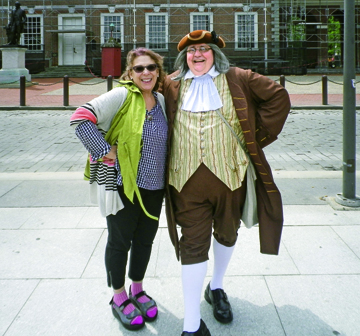
The Story of We the People, the ring-shaped series of exhibits on the second floor, constitutes the heart of the museum. One of the first displays is a shelf of Enlightenment books that delegates referenced while deliberating. We learn that Thomas Jefferson shipped volumes from France so James Madison could study ancient federations. Whatever their limitations, the framers were not, as some have claimed, interested only in protecting their property.
With timelines etched above, explanations at eye level and details crammed in every corner, history comes alive. Exhibits, arranged in chronological order, show how the Constitution was challenged and survived. There are exhibits for each of the original seven articles, for the Bill of Rights (the first 10 amendments) and the other amendments as well. Because they’re connected to constitutional issues, we learn about slavery, freedom of speech, labor unions and capital punishment.
Forward March Of Justice
It’s not just gazing into glass cases. You can pull levers in a voting booth, take the presidential oath at a podium, watch a video of new U.S. citizens. Winding my way around the rotunda, I see, at intervals, the same interactive screen: Can You Vote? Early on, the screen asks, “Are you white?” I press “yes” and am allowed to continue. But when I say no to the next question, “Are you a man?” a big red DENIED lets me go no further.
Even though I knew it was coming, I feel the unfairness.
Subsequent screens show how fairness got slowly instituted: nonwhites able to vote after the Civil War), then women (19th Amendment), then 18-year-olds (26th amendment. The framers, men of their time, were wise enough to know that times change; to ensure liberty for unknown future generations, they put the amendment process in place.
Exhibits show how the Constitution stretched for justice to march forward. Sometimes, as demonstrated in the Dred Scott exhibit, freedom took a backward step, when judges were slaves to beliefs of their time and could only interpret the Constitution narrowly.
It’s a document to be proud of, but not complacent about. More deeply than ever before, I’m seeing that if liberty is to survive, it is truly up to “you … and you …” and me.
The last exhibit is delightful Signers Hall, where 42 life-size figures — the 39 who signed the Constitution and the three who refused — stand frozen in thoughtful poses. I see how tall Washington was, and that Alexander Hamilton, of recent Broadway fame, was quite short!
As everyone snaps selfies with the signers, a docent offers personal tidbits; e.g., Rufus King of Massachusetts borrowed books from the library but never returned them; Washington went fishing during the August recess and caught some perch. And when the Constitution came back from being engrossed on parchment, it was, Washington said, “little short of a miracle.”
After all, this was the first time that a people had written down rules to start a nation off from scratch.
Historic Philadelphia
The National Constitution Center welcomes visitors seven days a week (except major holidays). Children enter free; tickets (adults, $14.50; seniors, $13) are half p rice if you go first to the Visitors Center, get tickets to Independence Hall and present those passes. Another advantage to stopping at the Visitors Center: the roving Once Upon A Nation storytellers who will spin a true yarn while you rest on a bench.
rice if you go first to the Visitors Center, get tickets to Independence Hall and present those passes. Another advantage to stopping at the Visitors Center: the roving Once Upon A Nation storytellers who will spin a true yarn while you rest on a bench.
The Constitution Center frequently hosts presentations, “timely constitutional conversations from all sides of the debate” and your trip could possibly be planned around one of these enlightening town halls. To find out more, visit constitutioncenter.org or call 215-409-6600. To see more pictures, visit www.glendalecherrycreek.com.
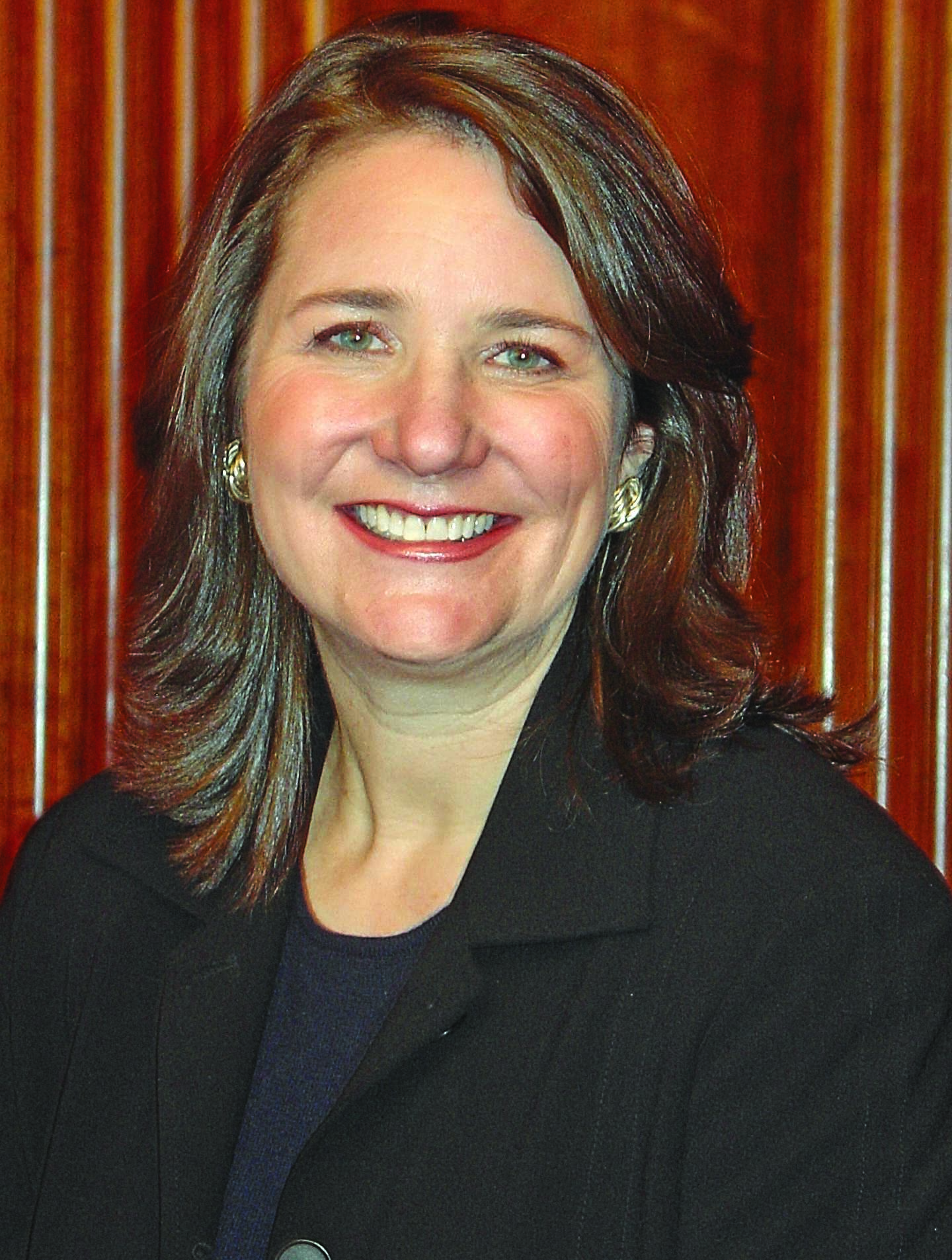
by Mark Smiley | Jun 9, 2017 | Travel
by Diana DeGette
Don’t hold me to it, but there’s a good chance that June in Washington, DC won’t be the wild roller-coaster ride that May was.
It’s no exaggeration to say that nearly every day last month brought stunning news that raised concerns about the state of our democracy, starting at the top. There was one shocking revelation after another involving Russian officials, President Donald J. Trump’s actions, the firing of FBI director James Comey, alleged conversations between Comey and President Trump, and other matters.
But as of this writing in late May, things have started to settle down — in part thanks to the appointment of a special counsel to oversee the FBI’s Russia investigation, which I had called for in a letter to Deputy Attorney General Rod Rosenstein earlier in the month while at home in Colorado.
I was especially pleased that Rosenstein tapped former FBI Director Robert Mueller, whom I know to be a man of integrity, professionalism and absolute dedication to justice.
Given the complexities of the situation and what is sure to be a thorough investigation under Mueller’s leadership, we can expect that it will be a long time before his work produces conclusions that can be shared with the public.
So maybe now we can get dispense with dramatic distractions for a while and get back to what Congress should do: pass legislation that improves life for Americans and helps make our country more secure.
If the President keeps to the promises he made in January, this would include major tax reform and an initiative to fix America’s crumbling infrastructure. But his one-page tax plan outline from late April hasn’t yet been translated to legislation, and an infrastructure bill is evidently even further down the road, since there’s been no sign of one yet.
Meantime, the House Republican leadership has forged ahead on its unilateral effort to dismantle the Affordable Care Act, jamming through a TrumpCare bill without waiting for an assessment of its costs and effects from the non-partisan Congressional Budget Office. The CBO reported in the last week of May that if this bill becomes law, it will ration care and put insurance companies back in charge. Twenty-three million people will lose their coverage within 10 years while the cost for millions others will go up — including those covered through employer plans. The onus is now on the Senate to prevent this damage.
We also should be deep into the process of preparing a budget for Fiscal Year 2018, which starts on October 1. President Trump’s budget blueprint in March, which slashed spending for important domestic and foreign policy priorities in favor of dramatically boosting the military budget, was greeted as a non-starter by congressional Republicans and Democrats alike.
The appropriations process only begins in earnest when the President presents an actual, detailed budget request to Congress, which he finally did on May 23. If enacted, this heartless and short-sighted budget proposal would cripple important domestic and international programs to create needless tax breaks for the wealthy. Republicans and Democrats alike spoke up immediately to protest it.
The delays, chaos and dysfunction that have characterized the Trump administration to date have not only affected the work of Congress. They have also undermined Americans’ confidence about where we’re headed as a country and how it affects our standing in the world.
With respect to the matters involving Russia and President Trump’s campaign and administration, the coming weeks and months will likely bring more revealing investigative reporting, along with rampant rumors, misdirection and misinformation. A truly independent, impartial Special Counsel will follow the cold, hard facts wherever they lead. And the Justice Department can determine whether there has been a violation of federal law in a way that no other approach to these issues can.
But that doesn’t rule out taking other paths to get at the truth. I have long supported the formation of an independent commission to investigate Russian interference in the 2016 election, including any possible collusion with the Trump campaign, and to ensure that such interference never happens again.
I first called for that commission in December when the intelligence community made clear that Russia had meddled in the election. That’s why I support, H.R. 356, the Protecting Our Democracy Act, which would establish such a commission. This bill has been ignored by the House Republican leadership, along with other substantive legislation intended to hold the President accountable.
An independent commission would involve experts from outside the government, who would not only seek out the facts, but also suggest solutions. The 9/11 Commission was one such effort, and its recommendations led to changes that helped make the United States safer.
Diana DeGette represents Colorado’s First District to the U.S. Congress. She serves as Chief Deputy Whip and is a senior member of the House Energy and Commerce Committee.

by Mark Smiley | May 26, 2017 | Travel
by Charles C. Bonniwell
 Cherry Creek Valley resident M.J. Mastalir was inducted into the Colorado Golf Hall of Fame at a banquet held at the great hall at the Sanctuary Golf Course on Sunday, May 21, 2017. He joined such golf luminaries as Hale Irwin, Greg Stadler, Dow Finsterwald and Babe Zaharias.
Cherry Creek Valley resident M.J. Mastalir was inducted into the Colorado Golf Hall of Fame at a banquet held at the great hall at the Sanctuary Golf Course on Sunday, May 21, 2017. He joined such golf luminaries as Hale Irwin, Greg Stadler, Dow Finsterwald and Babe Zaharias.
Mastalir was a member of the University of Colorado golf team that won the Big Eight Championship in 1968. He was also a graduate of the University of Colorado Law School and while a law student he was the assistant golf coach to Les Fowler, taking the reins of the team when the Colorado Legislature was in session as Fowler was a state legislator.
In 1985 he formed Real Estate Capital Corporation which was the first national company to finance golf course real estate projects across the country. He lent out a billion dollars in projects before he semi-retired in 2010.
As an accomplished golfer at age 32, Mastalir qualified for the United States Amateur and the following year he qualified for the United States Mid-Amateur. He played in the U.S. Amateur again in 1985. He also participated in the British Amateur in 1984 and 1987. From 1986 through 1993 he served on the USGA Executive Committee rising to the Vice President and chairing the Rules of Golf Committee.
As the rules chair he served as a rules official at all four of golf’s majors — the U.S. Open, the Masters, the British Open and the PGA Championship. At the induction dinner, he described being a rules official at major golf tournaments as “long spells of boredom interspersed with bursts of terror.” He rec alled officiating at the Masters when the highly temperamental Spaniard Seve Ballesteros slashed a shot into an azalea bush. Ballesteros rushed up to Mastalir about a foot away demanding to know where his ball was. Mastalir told him he had no idea but if it was found he would explain his options. The ball was found and Ballesteros took relief according to Mastalir’s instructions and then rushed away.
alled officiating at the Masters when the highly temperamental Spaniard Seve Ballesteros slashed a shot into an azalea bush. Ballesteros rushed up to Mastalir about a foot away demanding to know where his ball was. Mastalir told him he had no idea but if it was found he would explain his options. The ball was found and Ballesteros took relief according to Mastalir’s instructions and then rushed away.
In 1999 Mastalir was selected by Golf Inc. as one golf’s 25 most influential people along with golf legends such as Arnold Palmer and Jack Nicklaus.
Mastalir also served on the Colorado Golf Association Board of Governors for 22 years and was CGA president from 1997 to 1999. He is best remembered as the man who negotiated for the CGA the acquisition of the former Mira Vista Golf Course from the Lowry Redevelopment Corporation after the Lowry Air Force Base was closed. He was key to converting the old military course into the nationally praised open to the public CommonGround Golf Course with the help of golf course architect Tom Doak.
He is a member of the Denver Country Club as well as the Royal and Ancient Golf Club in Scotland. Attending the induction dinner were his wife Debbie and their two children Sarah and Blake who have provided them four grandchildren.
For more information on the Colorado Golf Hall of Fame, visit www.coloradogolf halloffame.org.
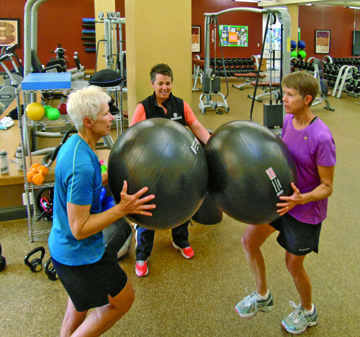
by Mark Smiley | Apr 28, 2017 | Travel
by Mark Smiley
 As summer rapidly approaches, you may be digging into your drawer to find your swimsuit. Now is the time to start thinking about how that swimsuit will look and feel on you. The Glendale Sports Center understands these types of considerations so they are running a sale to encourage their members to take advantage of personal training. The Glendale Sports Center has always focused on fitness and health but what many may not know is that they offer fitness assessments and personal training for their members.
As summer rapidly approaches, you may be digging into your drawer to find your swimsuit. Now is the time to start thinking about how that swimsuit will look and feel on you. The Glendale Sports Center understands these types of considerations so they are running a sale to encourage their members to take advantage of personal training. The Glendale Sports Center has always focused on fitness and health but what many may not know is that they offer fitness assessments and personal training for their members.
The fitness assessments are included in the membership and focus on body-composition analysis, equipment orientation, and mini fitness evaluations. This assessment is a good way to gauge where you are on the fitness spectrum and establish a baseline and future benchmark prior to starting an exercise program.
It is recommended that before beginning an exercise program, you undergo a fitness assessment. It provides key information that can be used to develop realistic goals and design an exercise program that will help meet your personal needs and achieve your goals.
When you have created your blueprint, it is time to consider personal training in your master plan. The Glendale Sports Center offers personal training for its members with four different personal trainers on staff with a varying degree of expertise.
Head trainer Beth Eafanti focuses on 30 minute workouts that cater to the busy professional. Deborah Montour trains the older adults who may be part of the SilverSneakers program, and Paul Hogan is a soccer coach who specializes in sports training. The newest trainer on staff, Dan Roake, will train anybody and is considered the most versatile.
These Certified Personal Trainers provide individualized physical conditioning programs based on their clients’ needs and goals. Members can schedule their appointments any time of the day based on their trainer’s schedule.
If you are not sure you need a p ersonal trainer or are concerned about the financial investment, consider that a personal trainer helps you define your fitness goals. They also offer a personalized workout, instruction, motivation, accountability, variety and efficiency.
ersonal trainer or are concerned about the financial investment, consider that a personal trainer helps you define your fitness goals. They also offer a personalized workout, instruction, motivation, accountability, variety and efficiency.
When Sports Center members sign up and pay by May 15, 2017, they will receive 10 percent off their personal training package. “We want to make sure people are still using the gym they are paying for,” said Monica Henrichs, Glendale Sports Center Health and Wellness Director. “The summer months have a lot of activities here in Colorado such as hiking, biking, and climbing, and having a personal trainer gear you up for that in May and the beginning of June is helpful.”
Packages range from $58 for one 1-hour session to $635 for 12 sessions and everything in between. The Sports Center also offers buddy packages where two people can split the cost of a one-hour session and receive even more of a discount.
To learn more, call Monica Henrichs at 303-692-5773 or visit www.sportscenterglendale.com.

 “I try to live normal, whatever normal is,” Christine Howard says matter of factly. That simple statement underscores the courage Howard packs into living every day with Stage 4 metastatic breast cancer. “I’m not a survivor, anymore. It’s gonna beat me. It’s an illness that’s going to kill me. I can’t say I’m okay with that but it’s a reality with me.” But Christine is not going down without a fight — for other breast cancer patients.
“I try to live normal, whatever normal is,” Christine Howard says matter of factly. That simple statement underscores the courage Howard packs into living every day with Stage 4 metastatic breast cancer. “I’m not a survivor, anymore. It’s gonna beat me. It’s an illness that’s going to kill me. I can’t say I’m okay with that but it’s a reality with me.” But Christine is not going down without a fight — for other breast cancer patients. there is no safety net for the middle class.”
there is no safety net for the middle class.”










